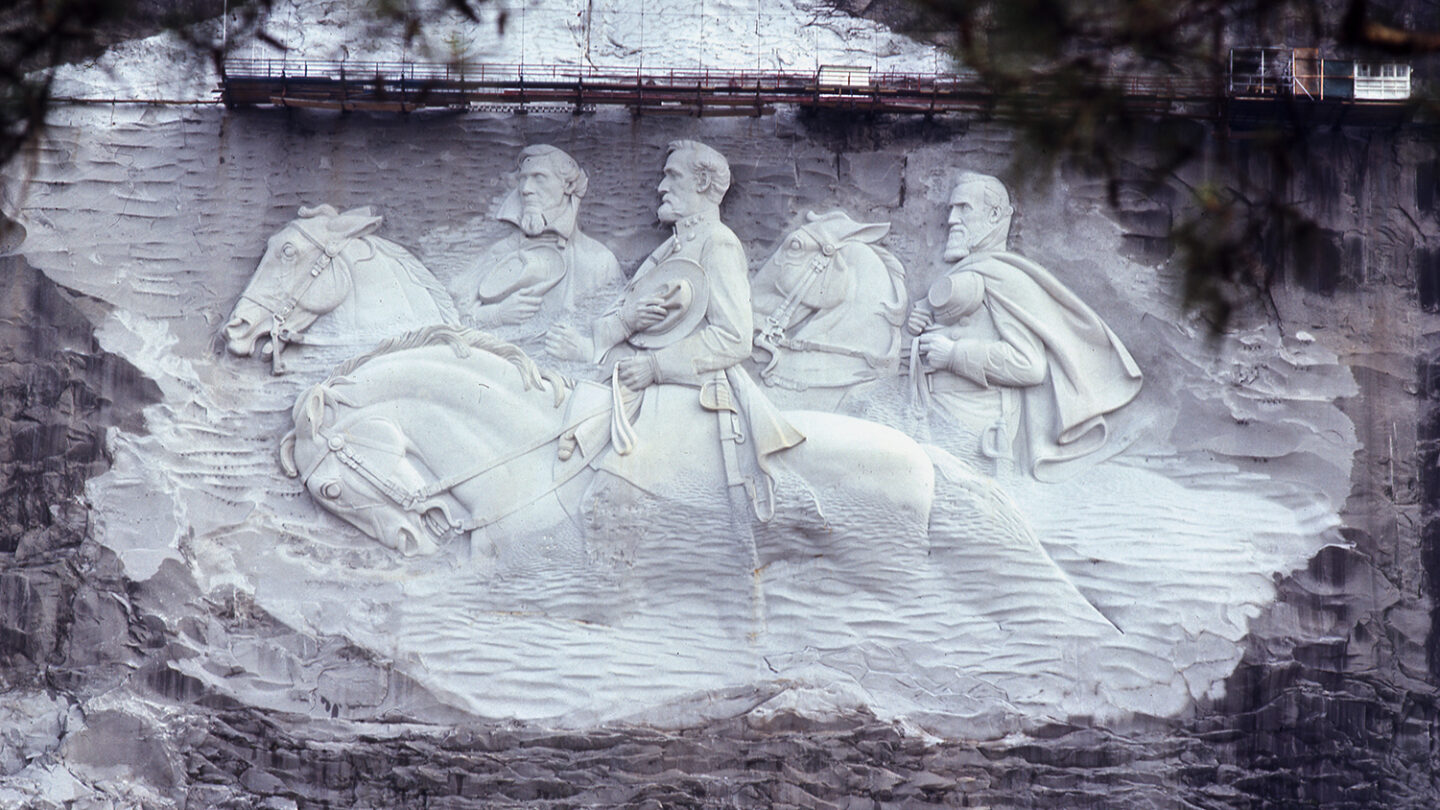
The Stone Mountain carving features Confederate figures Jefferson Davis, Robert E. Lee, and Thomas Jonathan “Stonewall” Jackson.
Symbols and their Meanings
Every day, you see symbols. A symbol is a shape or object that means or represents something else. Symbols can help you better understand the world around you and can represent more than one thing at the same time. For example, a star symbol might mean an important location, or that you did a great job on your homework, or someone who works in the justice system, like a sheriff. What other symbols can you think of that have different meanings?
Because symbols represent different things, each person might interpret, or understand, them in a unique way. The color red, for instance, might mean danger to some people or might mean love to others. Often the setting in which a symbol is used helps people understand what it means.
Monuments, like symbols, can mean different things to different people. A monument might honor a person or an event that happened. Sometimes groups can carry different feelings about monuments depending on whether they see the people or events in a positive or negative way. Some people might feel proud, excited, or joyful about a monument, while other people could feel sadness, anger, or resentment about the same monument.
Monuments and symbols can hold different meanings based on where people live, their age, gender, ethnicity, and more. For example, the Statue of Liberty symbolizes immigration and freedom to most Americans. To many French people, the Statue of Liberty symbolizes France’s friendship with the United States because the statue was made in France to honor the 100-year anniversary of the Declaration of Independence. You may see this monument differently depending on where you live. Different factors impact peoples’ perspectives on symbols. It’s helpful to recognize that monuments affect people in different ways.
History and Memory
What is history? Is it the Declaration of Independence, or maybe the Civil Rights Movement? Is it a photo album on your grandparents’ bookshelf? History comes in many different forms and is all around us! Personal and shared historical events are important to our stories, which is why we learn about history in school.
History is happening now! Yesterday is history, and so is last month.
Think about the internet: You use it all the time! You might even be using it right now! Things like the internet and iPhones are all around us today, but they’ve only been used over the last few decades. The history of the internet is all the reported facts about when the internet was created and how it changed everyday life. But memory is how people remember events. Those who were alive when the Internet was created will remember specific ways it changed their own lives, even without knowing all the details of its history.
Stone Mountain is a great example of memory versus history. Because of Stone Mountain’s large Civil War monument, many people consider the park to be a historic battleground; however, nothing from the war occurred there. The memory of the mountain is different from its history.
Try this!
Ask a trusted adult what life was like growing up. What things were popular when they were kids? How was their life different from yours?